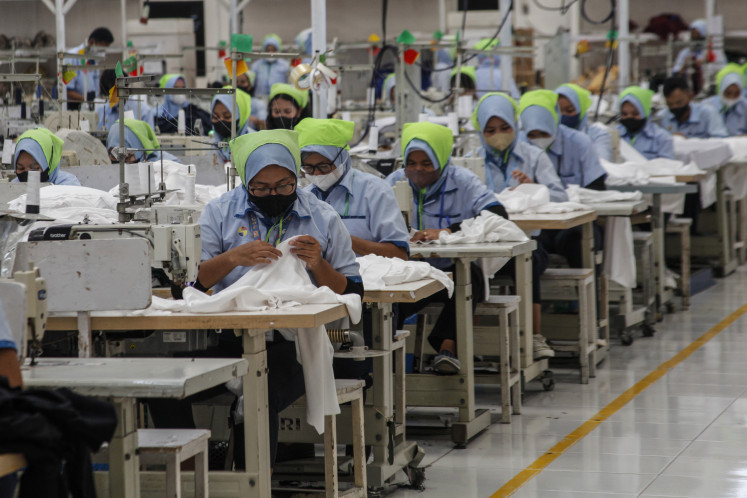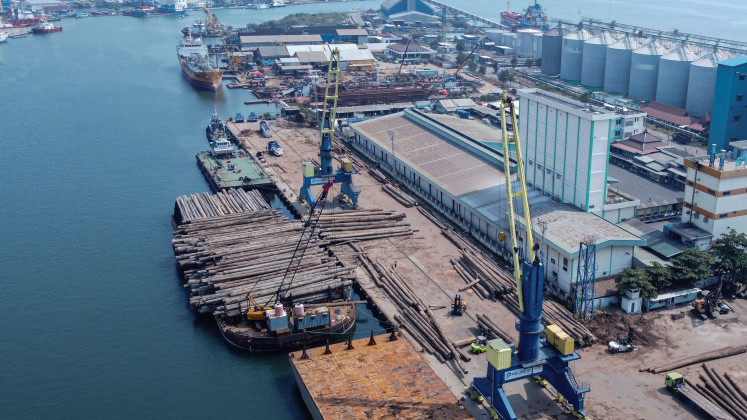Popular Reads
Top Results
Can't find what you're looking for?
View all search resultsPopular Reads
Top Results
Can't find what you're looking for?
View all search resultsSemarang to turn Kota Lama into world famous tourist attraction
As part of an effort to turn the Kota Lama, the old city in Semarang, Central Java, into a world famous tourist destination by 2018, Semarang Mayor Hendrar Prihadi has formed teams of experts to manage, renovate and reorganize Kota Lama into an appealing tourist attraction
Change text size
Gift Premium Articles
to Anyone
A
s part of an effort to turn the Kota Lama, the old city in Semarang, Central Java, into a world famous tourist destination by 2018, Semarang Mayor Hendrar Prihadi has formed teams of experts to manage, renovate and reorganize Kota Lama into an appealing tourist attraction.
'We have long envisioned Kota Lama as a world-class tourist site. Previous mayors had revived Kota Lama into a more beautiful and interesting place, but it is still not adequate. We have turned the Blenduk Church into an international tourist attraction,' said Hendrar.
Hendrar has formed three teams, namely the Kota Lama Area Management Board, Structural Expert team and Cultural Heritage Expert team.
The teams are comprised of architects, city planners, conservationists and ancient building experts.
The Kota Lama, or Oudstadt, was a business district during the Dutch colonial administration. It was built according to European architectural designs in the 17th century. The area, which is separated from residential areas, is also dubbed Little Netherlands.
The 31-hectare area is home to 105 old buildings, all of which are neatly arranged in blocks and separated by a wide street. The efficient planning actually resembles the city plan of a European city.
As many as 50 buildings still stand strong and are well maintained, such as the Blenduk Church, which was built in 1753, Jiwasraya Insurance building, state-run plantation company PTPN XV (currently under renovation), state-run shipping line PT Pelni building and several other office buildings.
However, dozens of other old buildings are in a derelict state and some are in danger of collapsing. One of them, located on Jl. Merak, actually collapsed at the end of November 2013.
The neglected buildings can be found in several places, such as on Jl. Cendrawasih (one building),
Jl. Taman Srigunting (one building), Jl. Mpu Tantular (three buildings), Jl. Kedasih (three building), Jl. Merak (four buildings), Jl. Garuda (one building), Jl. Gelatik (one building), Jl. Kepodang (four buildings) and Jl. Letjen Suprapto (one building).
'We urge owners of the old buildings to maintain or renovate them. They should start doing something immediately. Semarang is home to around 300 ancient buildings. Many investors are currently building new high-rise buildings in Semarang,' said Hendrar.
'We also invite other countries to work together us in revamping Kota Lama. We have forged cooperation with the Dutch government.'
He pointed out as an example, the Lawang Sewu building that has been abandoned for more than 25 years and is being renovated by state-owned railway company PT KAI from 2009 and has now become one of the most popular tourist attraction in Semarang.
'Initially, we need to map out all the buildings and then decide which ones must be saved first,' said Cultural Heritage Expert team head Widya Wijayanti.
Separately, conservationist Tjahjono Rahardjo, from Soegijapranata Catholic University said the Semarang administration had earlier organized meeting of the owners one of the old building.
'From the meeting it was revealed that the building was part of a family's inheritance. Consequently, they wished to sell it due to the high maintenance costs, said Tjahjono.
'On the other hand, the buyer refused to buy the building, which has been listed as a cultural heritage site because its structure cannot be changed and used for other functions,' he added.










